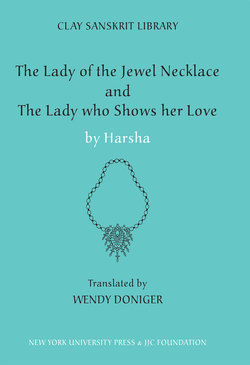Читать книгу The Lady of the Jewel Necklace & The Lady who Shows her Love - Harsha - Страница 16
На сайте Литреса книга снята с продажи.
Оглавление11)—worse than anything that Bana or any court poet of the first order would produce for the sake of the seventh-century equivalent of a MacArthur grant. But there is another, better argument for the royal author.
I have said he was almost unique, because another poet king, the Pallava ruler Mahendra·varman, wrote a delightful satire called the ‘The Comedy of the Madman’s Antics’ (Matta/vilasa/prahasana). These two are the only kings who wrote Sanskrit plays good enough to be frequently cited within the tradition or, as far as we know, to survive at all. (Other kings, of course, may have written plays, perhaps in vernaculars as well as in Sanskrit, but no one cared to preserve them by having them copied over and over again; in a climate like India’s, only the fittest texts survive.) Oddly enough, Mahendra·varman was a contemporary of Harsha and was defeated by the same Pula·keshin II who defeated Harsha. Mahendra·varman ruled Kanchi, on the other side, the southern side, of the same Vindhya stronghold that formed the southern border of the empire of Harsha as well as of the hero of his plays, the mythical King Udayana of Kaushambi. Pula·keshin II, therefore, surely appears in the Harsha plays as the king of Kosala/Vindhya·ketu, whom Udayana, unlike his author, succeeds in conquering in the battles of the Vindhyas. Pula·keshin II did not, apparently, write any plays worth keeping.
And if we assume that a ruling king really wrote these two plays, we gain access to certain suggestive insights into their plots. Clearly they owe a great deal to the ‘Kama Sutra’ (Kama/sutra), the ancient Indian textbook of eroticism, but the ‘Kama Sutra’ itself is closely based on the ‘Artha· ________
